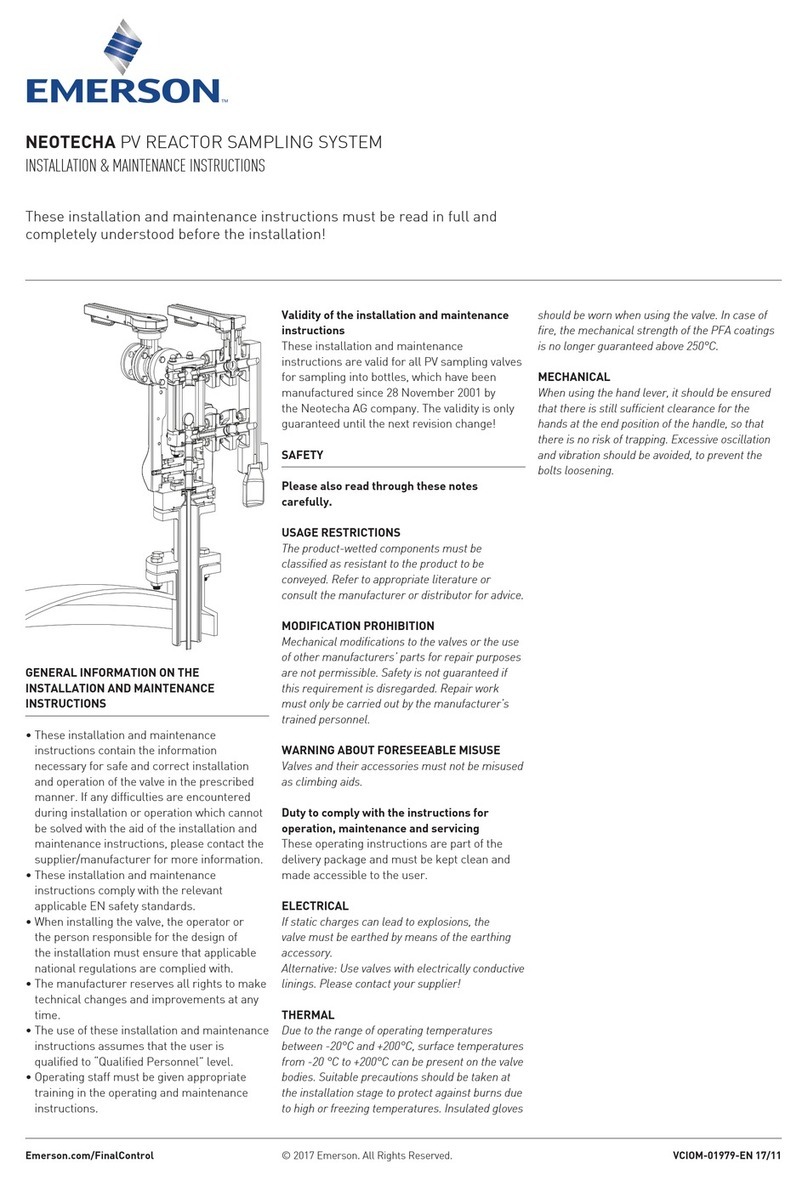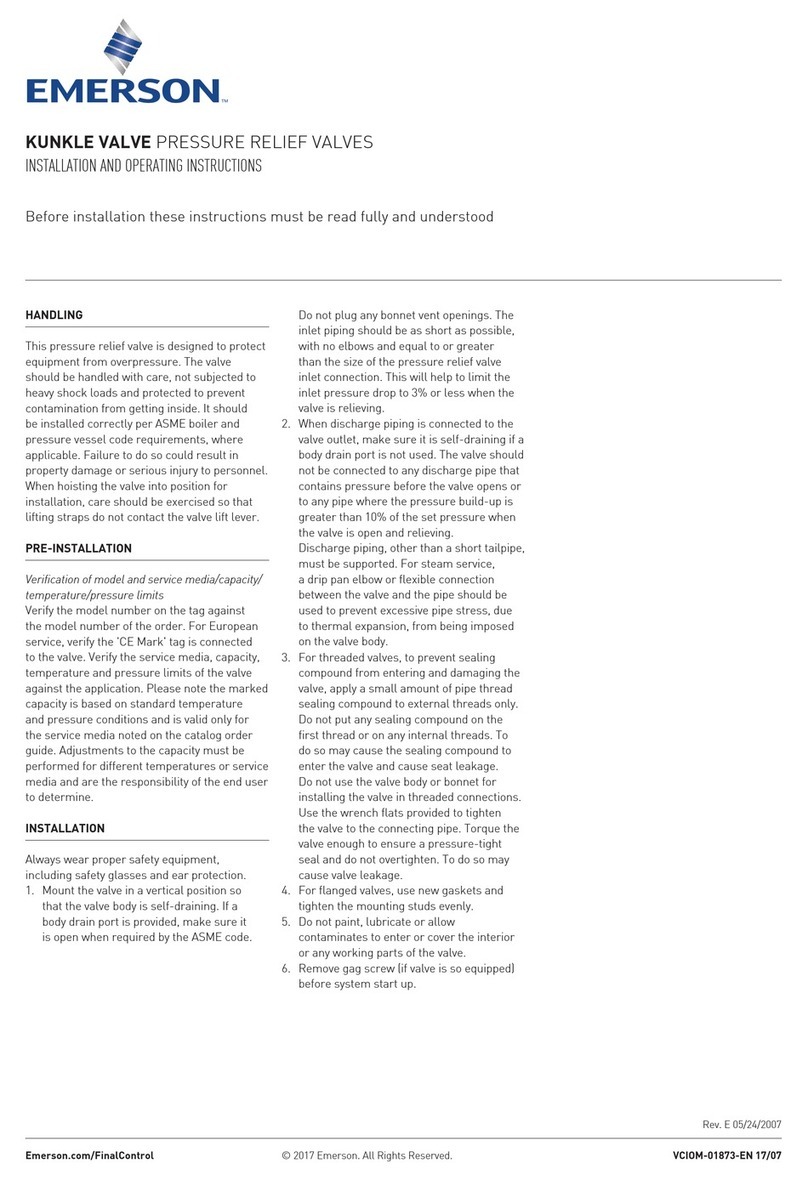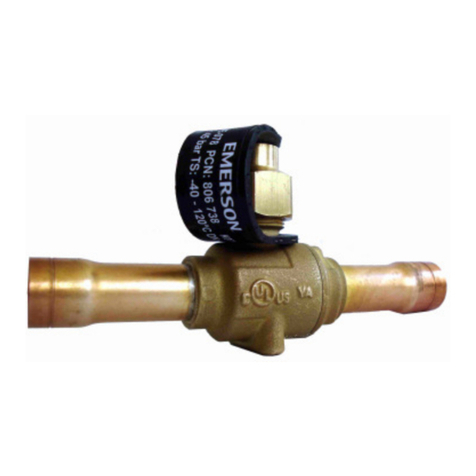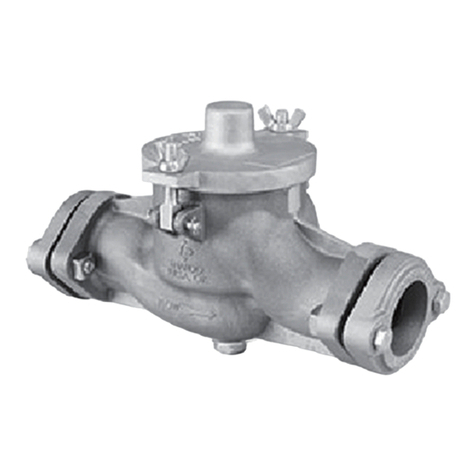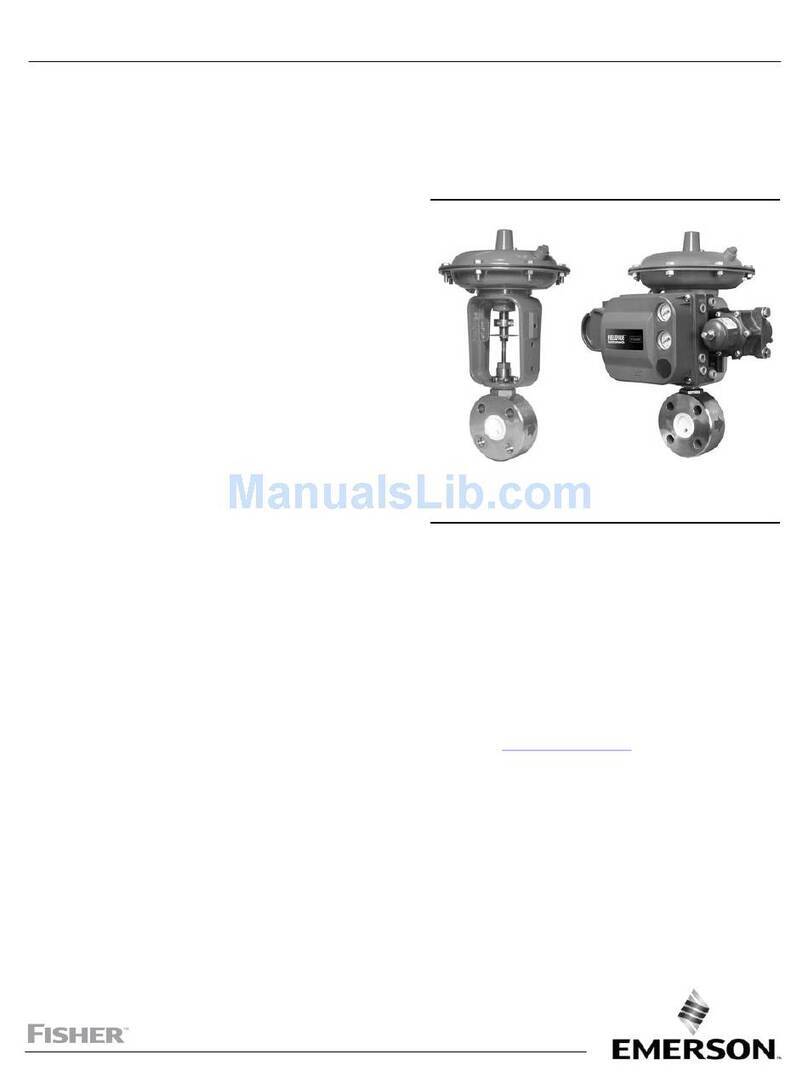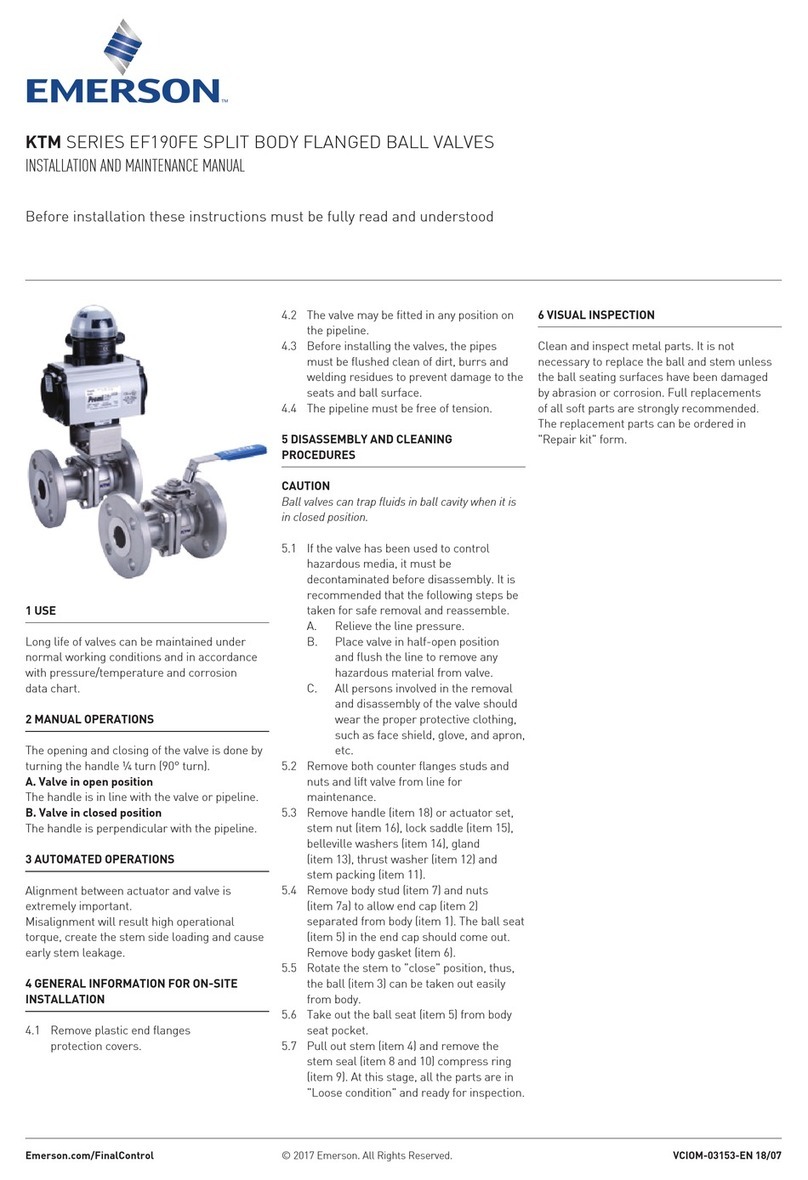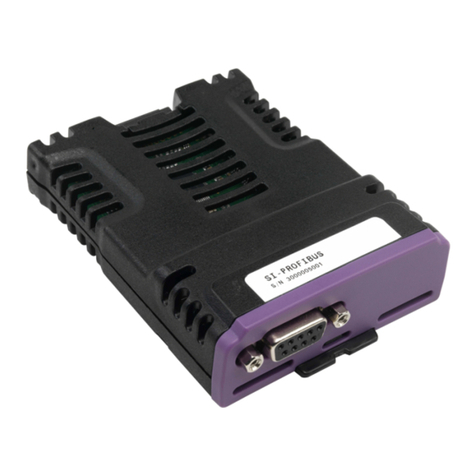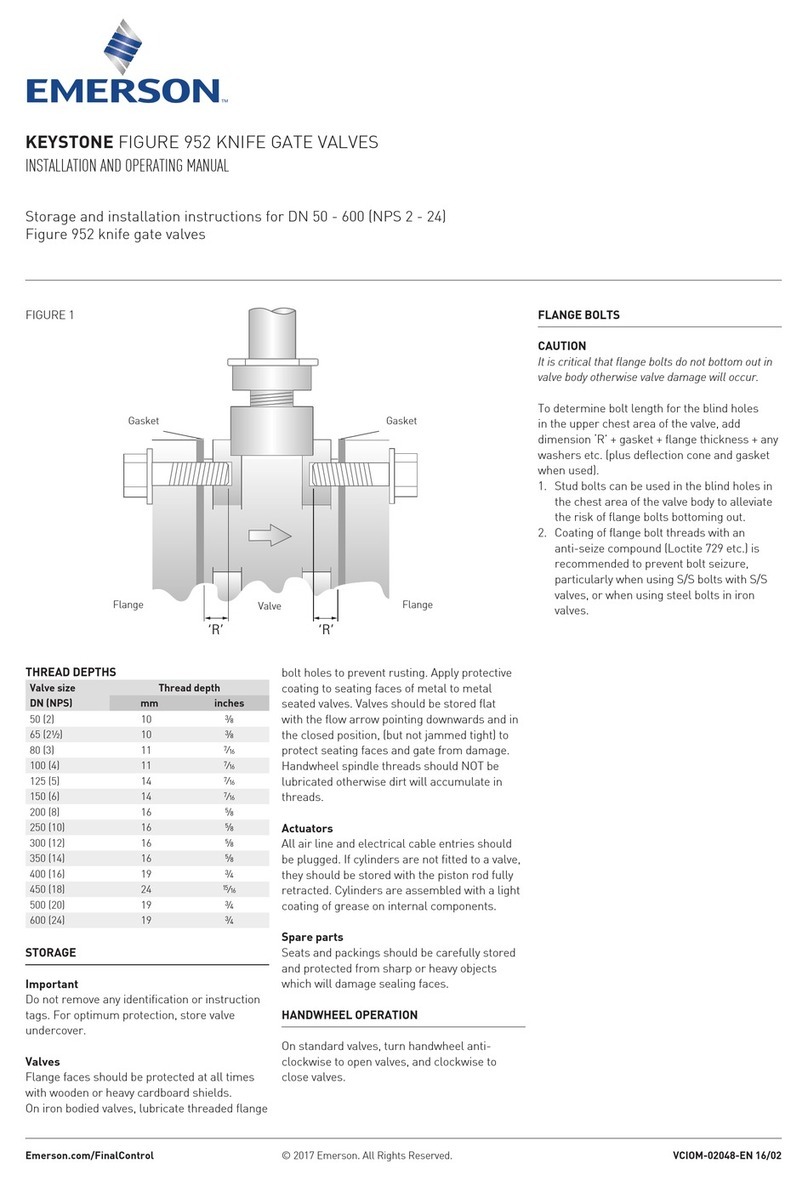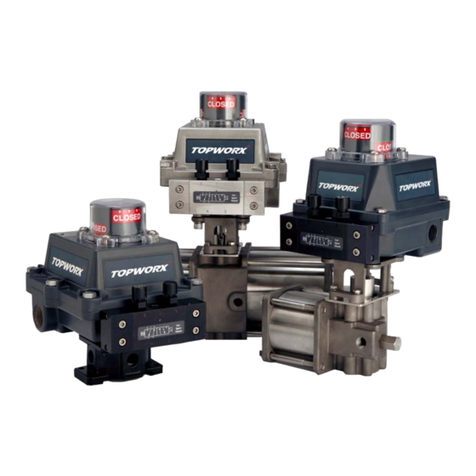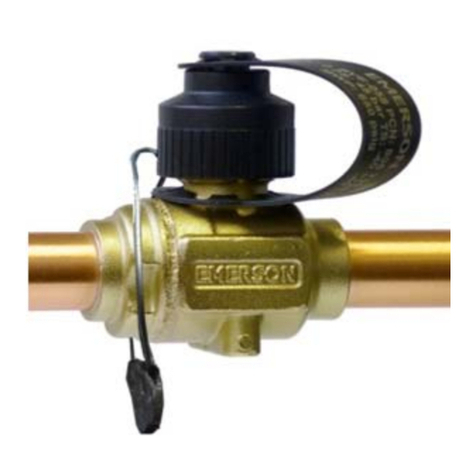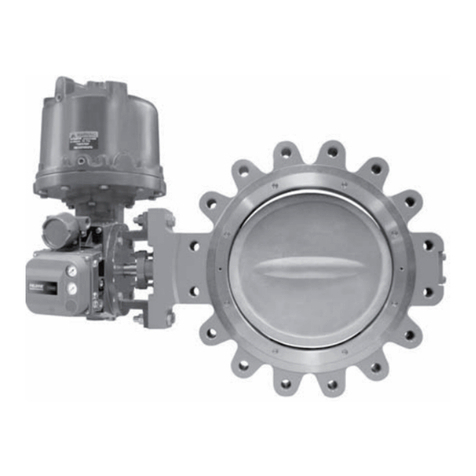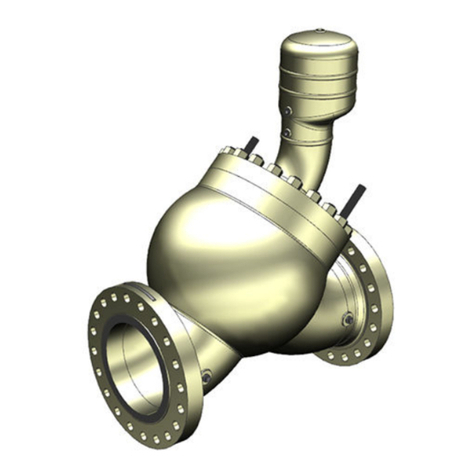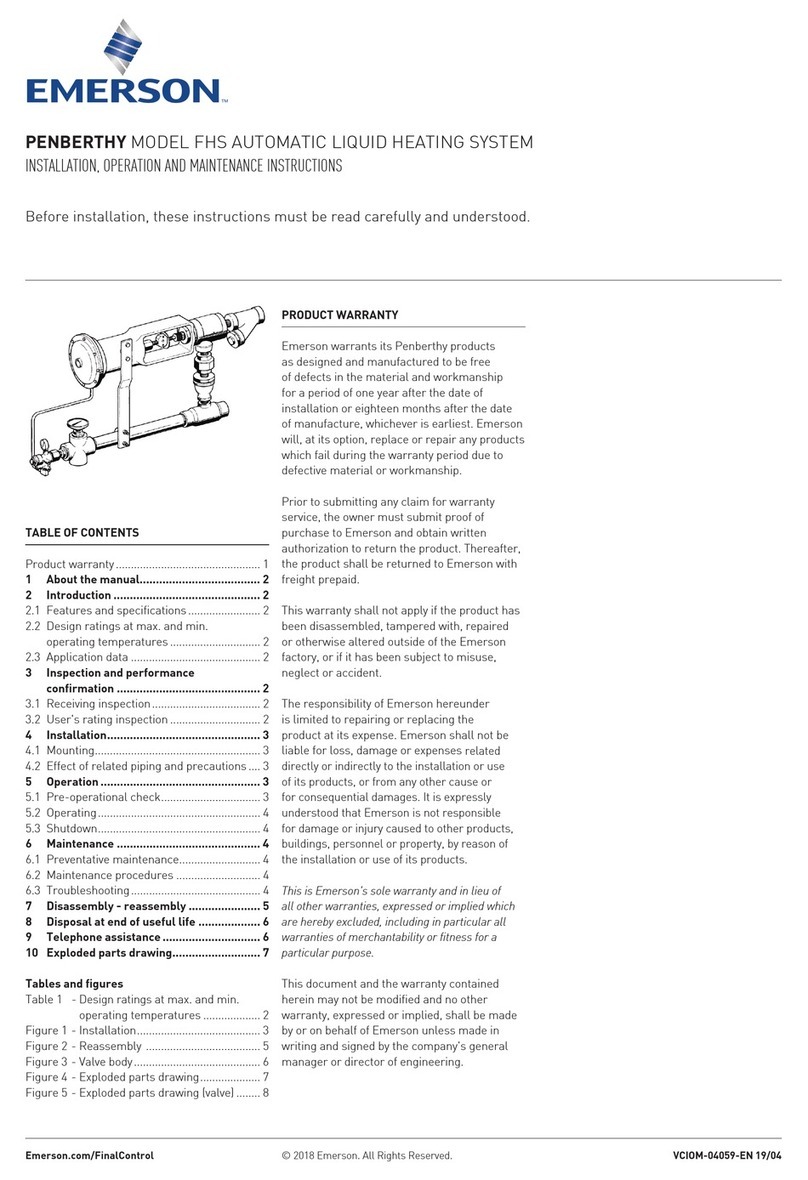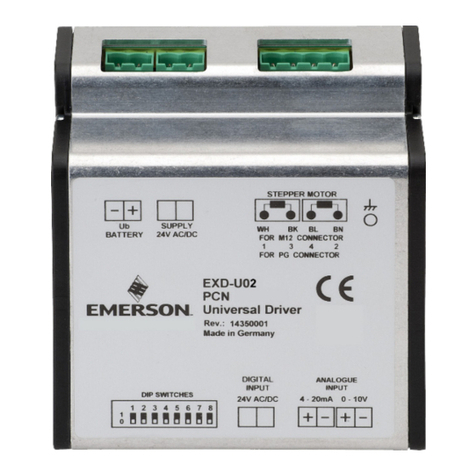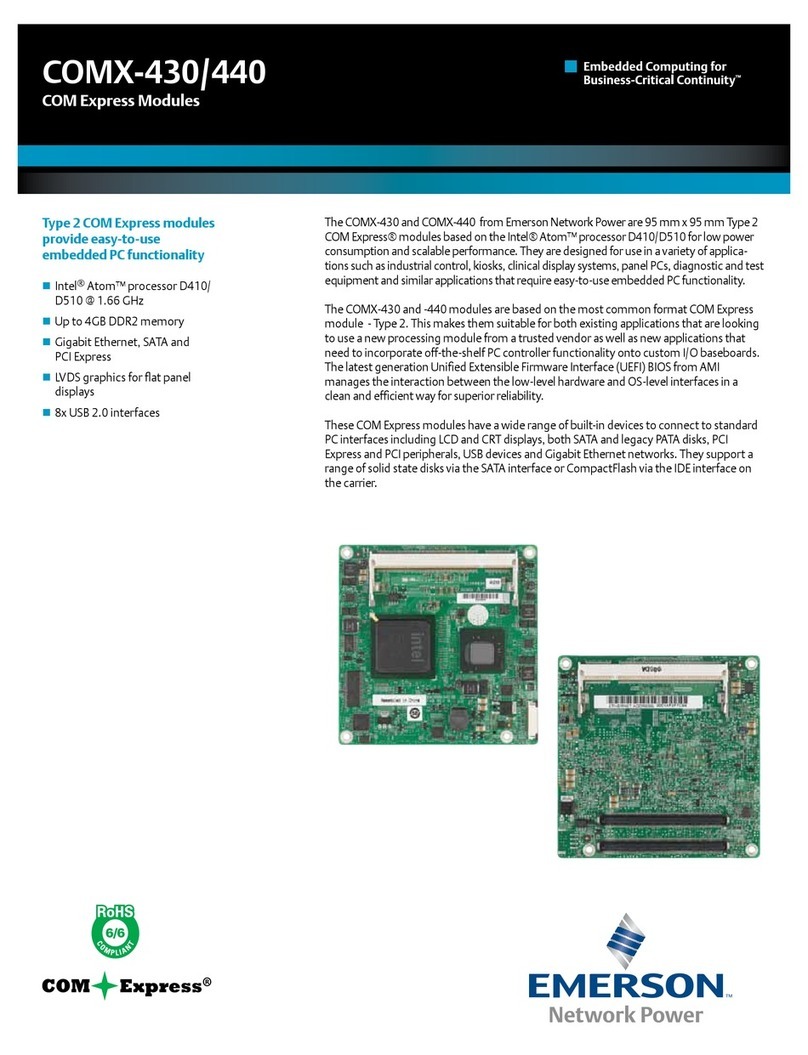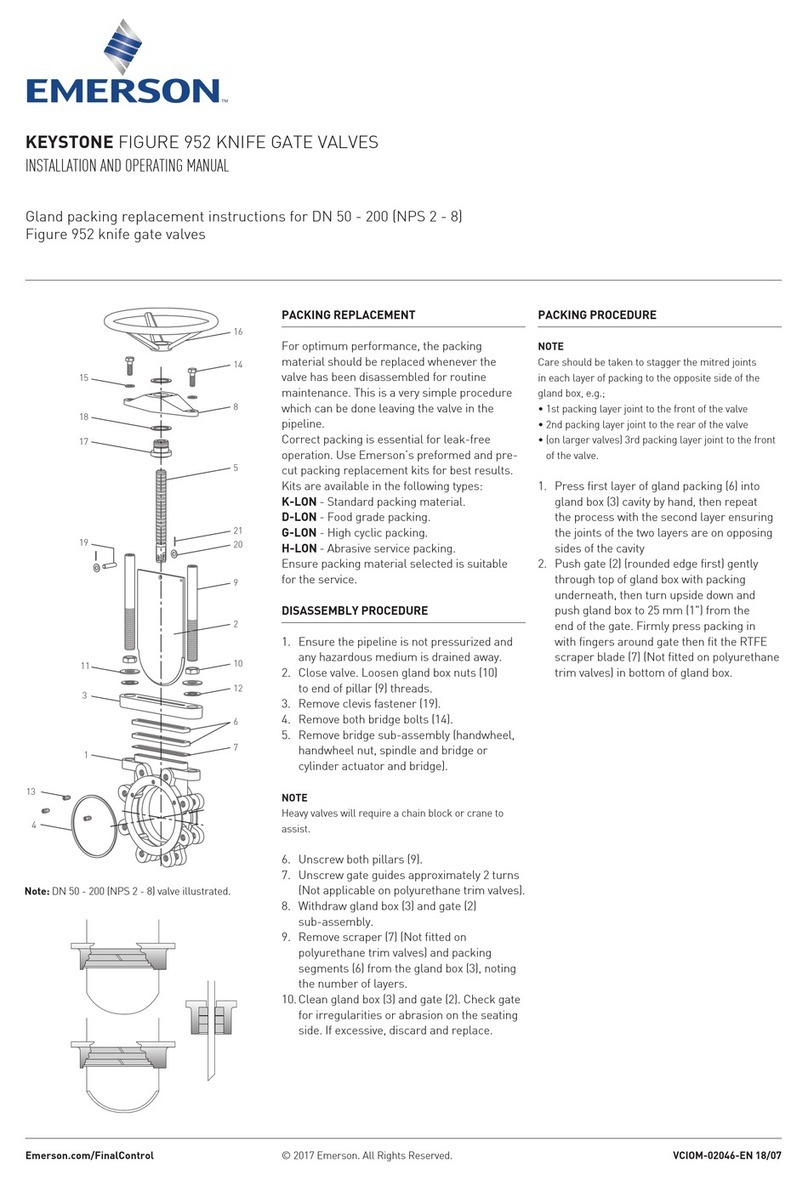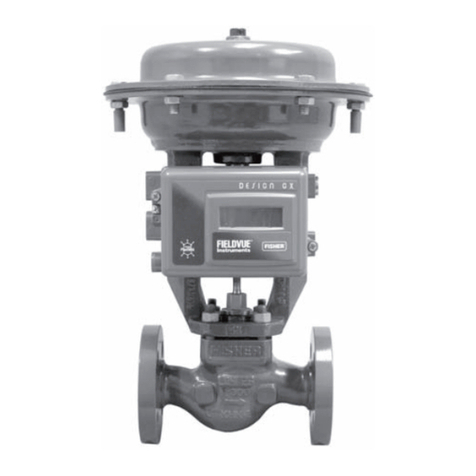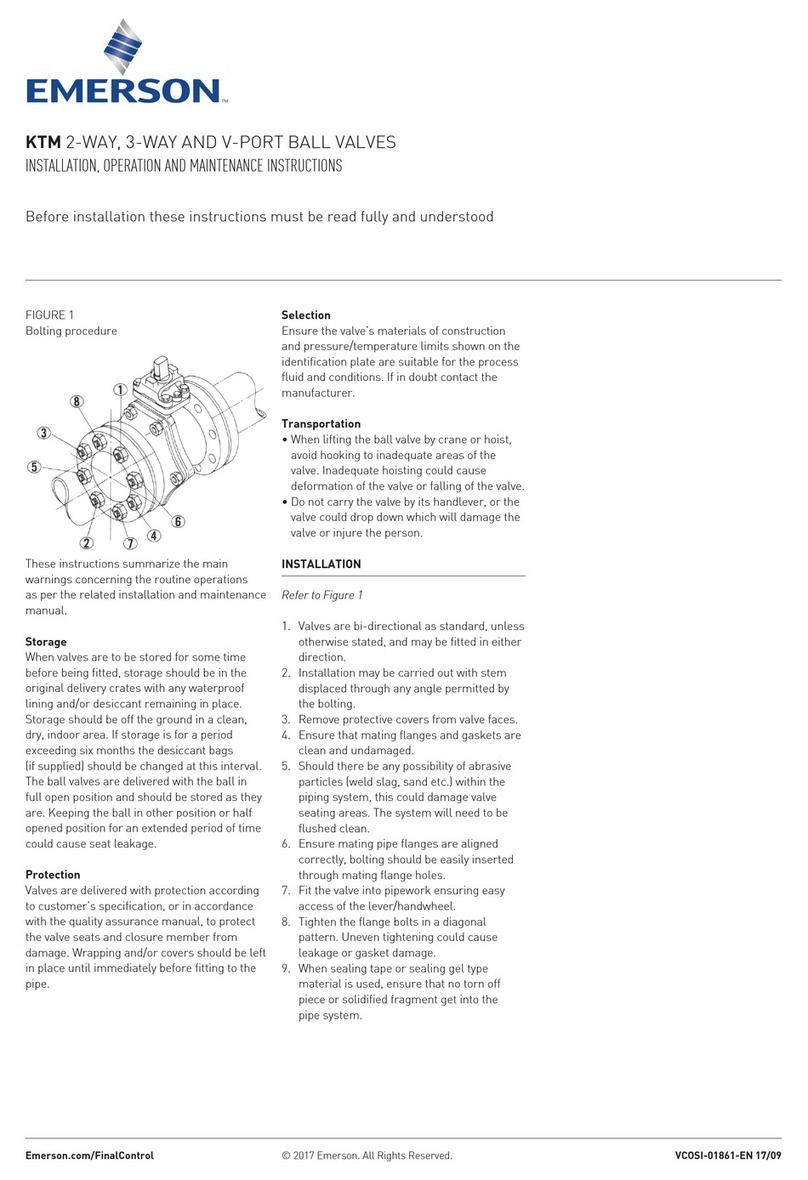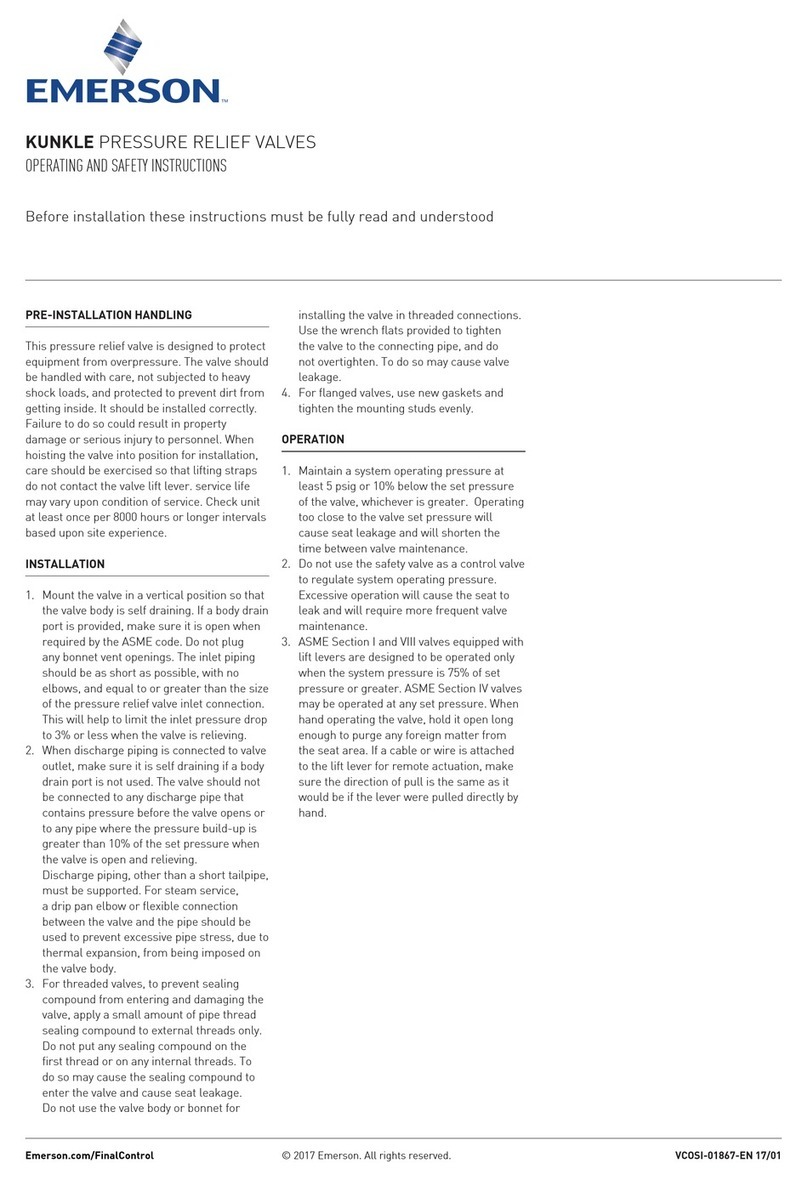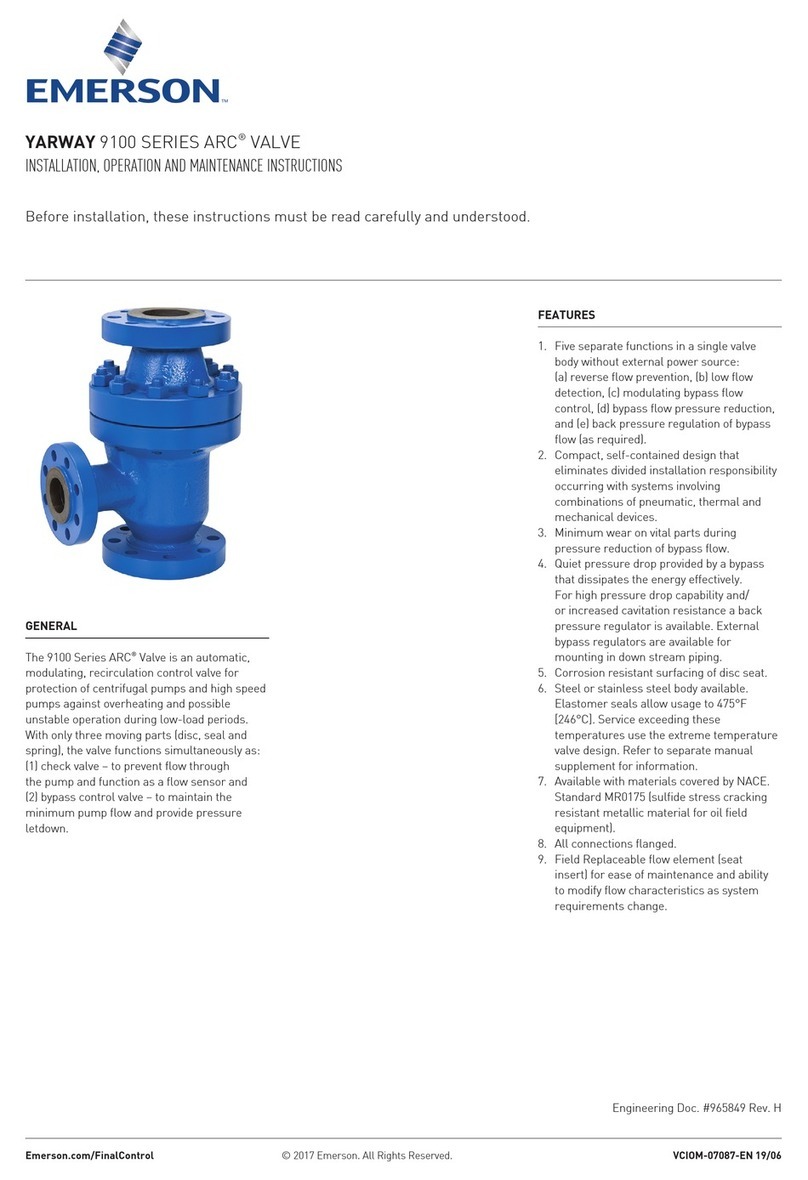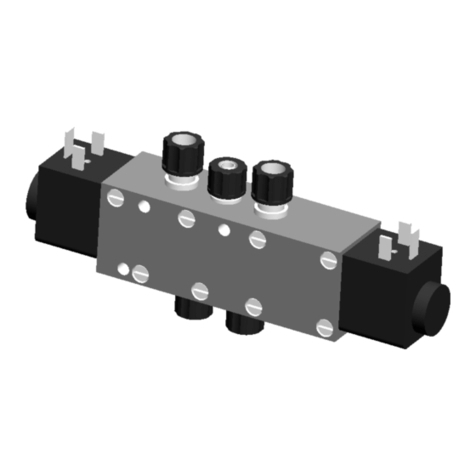
TBX Valve
Instruction Manual
February 2010
9
7. A length of straight pipe is required downstream
of the TBX valve to ensure complete vaporization of
cooling water. An example of a typical installation
appears in figure 3. Consult the TBX customer
specification sheet for the required distance of
straight pipe. This is unique for each application and
supplied by Emerson Process Management.
8. Typically, a temperature sensor should be
mounted a minimum distance of 9.1 m (30 feet)
downstream of the TBX valve. This distance will vary
depending on a number of factors including steam
velocity and percentage of spraywater.
Consult the customer specification sheet provided
with the unit for this distance. The steam line should
not have any branch lines dividing the steam flow
between the TBX valve and the temperature sensor.
If you have any questions, contact your local
Emerson Process Management sales office.
9. A typical control loop is illustrated in figure 3. A
pressure transmitter senses the pressure
downstream (or upstream in backpressure control
applications, per figure 4). The pressure controller
sends a signal to the actuator positioner opening or
closing the TBX valve as required to maintain
pressure. A rising stem opens the TBX valve to allow
additional steam flow. A temperature sensor (TE)
measures changes in temperature and a
temperature transmitter (TT) transmits the signal to
the temperature control device. The output signal
from the controller is sent to the positioner on the
cooling water (spraywater) control valve (SWCV).
The positioner’s output signal strokes the SWCV
open, increasing water pressure on the nozzles.
Increasing water pressure upstream of the nozzles
increases water flow through the nozzles.
CAUTION
Pneumatic lines (where applicable)
should be thoroughly blown clean with
dry air before connection. Check
electronic lines for correct connection.
10. If foreign debris has been introduced into the
valve or upstream piping during installation, it must
be removed prior to using the valve for the first time.
A Blowout or Blow-through tool can be purchased to
match the TBX valve and facilitate piping blowdown
without removal of the valve from the line. Contact
your Emerson Process Management sales office for
pricing and availability of fixtures.
11. After cleanliness of the piping system has been
assured, connect instrumentation and power supply
to the TBX valve actuator and associated
equipment.
12. Monitor the TBX valve as the system is brought
on line. Some visible vapors may be seen as the
lubricants are heated. If you see any steam leaks
after startup, follow isolation and disassembly
procedures and disassemble the valve and replace
the gaskets (key 43). If the packing box leaks,
tighten hex nuts (key 68). If leakage continues,
replace the packing (key 64). Be sure to properly
isolate the TBX valve prior to disassembly of valve
or packing.
Maintenance
Servicing
WARNING
Avoid personal injury or property
damage from sudden release of
process pressure or bursting of parts.
Before performing any maintenance
operations:
DDo not remove the actuator from
the valve while the valve is still
pressurized.
DAlways wear protective gloves,
clothing, and eyewear when
performing any maintenance
operations to avoid personal injury.
DDisconnect any operating lines
providing air pressure, electric power,
or a control signal to the actuator. Be
sure the actuator cannot suddenly
open or close the valve.
DUse bypass valves or completely
shut off the process to isolate the
valve from process pressure. Relieve
process pressure from both sides of
the valve. Drain the process media
from both sides of the valve.
DVent the power actuator loading
pressure and relieve any actuator
spring precompression.
DUse lock-out procedures to be
sure that the above measures stay in

